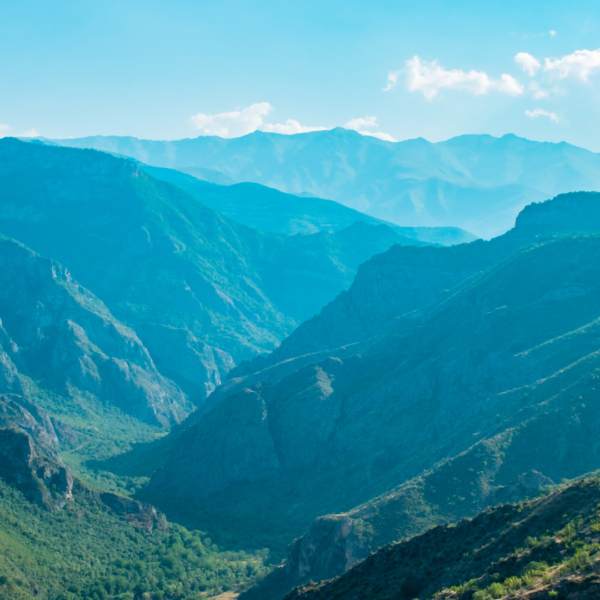Should the 2022 Declaration recognize rights of nature?
Reading time : 7 minutesThe UN General Assembly has decided to organize an international conference in 2022 to celebrate the 50th anniversary of the 1972 Stockholm Declaration and to discuss a universal declaration on environmental matters. Given the growing environmental crisis of climate change and biodiversity loss, it is imperative to recognize the Rights of Nature in the 2022 Declaration. Rights of Nature recognition seeks to adopt a new Earth-centered paradigm that limits human activities by imposing the respect of the planet's intrinsic capacity, the protection of the Rights of Nature, and the development of productive life in harmony with Nature. The Declaration will be a unifying instrument to complete a fragmented mosaic formed by different fields of international environmental law. Consequently, the Earth-centered Declaration will fill in gaps of an incomplete discipline. As a result, the 2022 Declaration would serve as a model law to stimulate a broader application by the countries and elevate existing standards for conservation at the international and domestic levels. And for the first time, it opens the door for creating international guardianship institutions that allow Nature to be represented universally.

1.1 The Stockholm Declaration as an opportunity to recognize the Rights of Nature
International environmental law has not effectively protected or restored Nature. This is largely due to a fragmented and anthropocentric approach that allows and fuels degradation and harm by not properly recognizing and respecting humankind’s relationship with and responsibilities to the entire Earth community.
Rights of Nature provides a unifying and overarching framework in which all systems of law would stem from, and be reoriented around. By recognizing Nature as a legal entity, we reorient western law around principles of relationship, interconnection, reciprocity and responsibility, and the recognition that all Earth’s beings, ecosystems, communities and components have fundamental rights to exist, thrive and evolve. Rights of Nature is a part of the broader body of Earth law, or Earth-centered governance, which includes emerging paradigms such as ecocide and Indigenous rights/customary law.
In 1982, the UN General Assembly considered the World Charter for Nature as an attempt to transform our legal and governance systems with such an umbrella framework. The Charter recognized that every form of life warrants respect regardless of its worth to man, and decision-making should ensure Nature’s essential processes and long-term capacity are not impaired.
The growing environmental crisis, including climate change and biodiversity loss, highlights the need to ground legal standards and principles of law in a worldview and framework of humankind in an interconnected and interdependent relationship within Nature, rather than humankind as owners and separate from Nature. Through the Declaration, there is an opportunity to support and advance a transformation in the values and ethics that underlie our legal, governance and economic systems, thus transforming how we approach conservation and decision-making and implement and enforce policies. Therefore, we recommend the Declaration recognize and codify Nature’s rights and revisit principles of law to guide implementation under the Rights of Nature framework.
Through the Declaration, there is an opportunity to support and advance a transformation in the values and ethics that underlie our legal, governance and economic systems.
Michelle Bender, Constanza Prieto Figelist and Rachel Bustamante Tweet
1.2 Codification of Nature’s rights
The Declaration should recognize Nature as a legal entity with fundamental rights. Several countries have already embraced the Rights of Nature, whether in constitutional amendments, national law, judicial decisions, treaty agreements, or local law/resolutions; for example, in Ecuador, Mexico, Bolivia, India, Colombia, Brazil, New Zealand, and the United States. Similarly, the 2010 Universal Declaration of the Rights of Mother Earth can provide a template for introducing rights in the 2022 Declaration. Such rights include the right to integral health, restoration, clean water and air, and regeneration.
Additionally, Nature herself must have standing and representation in decisions and disputes. The principle of representation for Nature and her non-human constituting elements can be realized by ensuring the right of communities to protect Nature and guardianship. For example, Ecuador’s constitution provides that any citizen can sue on behalf of the environment: “All persons, communities, peoples and nations can call upon public authorities to enforce the rights of nature;” and the Te Awa Tupua Act in New Zealand created formal guardians or Te Pou Tupua –humans (representatives of the Maori and the Crown) who are legally responsible for promoting and protecting the health of Te Awa Tupua/ the Whanganui River, now recognized as a legal person, and speaking on her behalf in matters that affect her health.
It is important to note that humankind and human rights stem from and are a part of Nature and Nature’s rights, which are the most fundamental rights (i.e. we cannot realize human rights without recognizing where they originate from) and that some Indigenous cultures do not conceptualize ‘rights’ as the western legal system does, and have recognized and respected the deep relationship with the Earth community since time immemorial. As a result, care must be taken to learn from and incorporate Indigenous peoples and knowledge in the codification effort of the Declaration.
2.1 Implementation of the Rights of Nature
There is a growing awareness of the importance of language, its role in determining our ethical and moral considerations towards Nature, and how our perceptions and values drive conservation. It is of great concern that anthropocentric language dominates conservation, and in particular international treaties, conventions and declarations.
Recognizing Rights of Nature in the 2022 Declaration would mean conscious oversight of the language we use and how we define and relate to Nature. For example, terms that equate Nature to a “natural resource,” property or object, or suggest Nature as only having benefits to human communities, such as through “ecosystem services,” are inconsistent with Rights of Nature, and our inherent relationship with the Earth.
Implementing the Rights of Nature also requires us to redefine sustainability. The present model and language of sustainable development are vague and grounded in anthropocentrism. A reinterpretation of sustainability would view social, cultural, environmental, and economic issues working together in balance. A redefinition could take the form of ‘ecological sustainability,’ defined as: any and all human activity must be grounded within and in respect of Earth’s planetary boundaries, in recognition and protection of the inherent Rights of Nature, and in promotion of living in harmony with Nature. Human activities would be grounded in the complex interactions and natural processes of Nature and strive to restore and maintain the health of the entire Earth community, rather than merely slow the decline of ecosystem health. For example, rather than utilizing metrics, such as “maximum sustainable yield,” in determining the amount of fish acceptable to take out of an ecosystem, our ocean-use paradigm would “converge towards a more holistic approach that balances both human well-being and ecological well-being,” increasing and maintaining population health.
Similarly, the draft building block of the 2022 Declaration reaffirms “the General Assembly resolution 70/1 of 25 September 2015, entitled ‘Transforming our world: the 2030 Agenda for Sustainable Development,’ in which it adopted a comprehensive, far-reaching and people-centered set of universal and transformative Sustainable Development Goals and targets.” Going forward, it is imperative that an Earth-centered set of goals and targets be adopted in the upcoming Declaration, rather than drawing from outdated and insufficient anthropocentric frameworks.
2.2 Addressing a fragmented mosaic formed by traditional environmental law
Other international resolutions and bodies support our recommendation to codify Nature’s Rights within the 2022 Declaration. The international community has recognized on multiple occasions the necessity and efficiency of Earth-centered governance:
- The United Nations Harmony with Nature Programme began in 2009, with over ten UN General Assembly resolutions calling for promoting harmony with the Earth and supporting efforts being made towards implementation.
- The United Nations “The Future We Want” (A/RES/66/288) recognizes “that some countries recognize the rights of nature in the context of the promotion of sustainable development,” with the firm belief that, “in order to achieve a just balance among the economic, social and environmental needs of present and future generations, it is necessary to promote harmony with nature.”
- The International Union for the Conservation of Nature (IUCN) Resolution 100 calls for the initiation of a process that would include the Rights of Nature in IUCN as a focal point for decision making and the creation of a Universal Declaration of the Rights of Nature.
- The IUCN World Declaration on the Environmental Rule of Law establishes 13 principles of law, including the obligation to protect Nature and the Rights of Nature.
- The Rio Declaration on Environment and Development recognizes the integral and interdependent nature of the Earth and proclaims that humans are entitled to a life in harmony with Nature.
Despite being an instrument of soft law, the experiences of other UN Declarations show they lead to profound transformations in domestic environmental law.
Michelle Bender, Constanza Prieto Figelist and Rachel Bustamante Tweet
Recognizing the Rights of Nature in the 2022 Declaration would align the above and other frameworks under a clear code of conduct and legal norm and an umbrella framework with Earth-centered standards and principles.
The 2022 Declaration would be the first to codify Rights of Nature at the international level. Thus far, international efforts have largely fallen within the scope of nonbinding resolutions or work programmes, and States have opted for various legal formulas, sources, and legal language. This Declaration would influence domestic law, encouraging governments to adopt this worldview and standards at the state level. Despite being an instrument of soft law, the experiences of other UN Declarations show they lead to profound transformations in domestic environmental law. For instance, after the promulgation of the Rio Declaration, the precautionary principle has been adopted widely by nations worldwide.
Likewise, an Earth-centered Declaration would positively impact the existing environmental treaties and principles of law. Courts could revisit and reinterpret traditional norms and principles of law based on this new holistic approach, helping to elevate the original standards of protection. An evolutive interpretation means, as the European Court of Human Rights stated, that international instruments are “living instrument(s) which […] must be interpreted in the light of present-day conditions.” An illustration of the importance that an evolutive interpretation can have from recognizing the Rights of Nature is the experience of the InterAmerican Court of Human Rights (2017) which considered that Nature could be considered subject of protection in the scope of the right to a healthy environment. The Court decided to make an evolutive interpretation of the American Convention of Human Rights, based on the regional evolution of healthy environment norms and the recognition of Rights of Nature made by Ecuador and Colombia. The recognition of Rights of Nature would therefore encourage an adaptive approach.
The international recognition of Rights of Nature is a missing piece that will coalesce the fragmented mosaic formed by traditional environmental law, human rights, and international investment law. The 2022 Declaration would allow Nature, humans, and the planetary economy to develop under the same principles rather than competing objectives. An Earth-centered Declaration would fill in the gaps of a fractional discipline that has been developed disconnected from other fields such as human rights and the Indigenous people’s rights.
2.3 An opportunity to implement guardianship for Nature
The representation principle offers an example of the evolutive interpretation of principles of law through an Earth law lens. The United Nations Conferences on the Human Environment created new institutional structures at the service of the commitments assumed by governments. A fundamental principle of the Rights of Nature framework is representation, which means that Nature has a right to be heard and to ‘standing’ in decision making and disputes. One such way this principle has been enforced is through the concept of guardianship. We can find this implementation standard in the example of Aotearoa/New Zealand, where the Māori negotiated the Te Awa Tupua Act of 2017 (also known as the Whanganui River Claims Settlement). The law revolves entirely around the Maori spiritual understanding that “I am the River and the River is me.” A guardianship body composed of Maori and Crown representatives, or Te Pou Tupua, is responsible for representing the River’s interests in decisions and disputes and speaking on behalf of the River in matters relating to her health. Despite the array of individuals whose interests may clash, they are required to have “particular regard” for the ecosystem’s intrinsic values and personhood.
Likewise, the Declaration could propose creating an international institution, for example as a part of the United Nations Environment Programme (UNEP), that could provide concrete legal representation for Nature. Through this institution, Nature would be considered a stakeholder in decision-making processes at the international level, ensuring her needs are considered equally amongst governments and other interested parties.
Conclusion
The recognition of the Rights of Nature in the 2022 Declaration would mean abandoning the traditional anthropocentric model and adopting an Earth-centered worldview. Earth law embraces a holistic worldview in which human beings and natural entities are interdependent and connected, recognizing that Nature has a value in herself. Under the Rights of Nature paradigm, Nature is considered an entity subject of rights and can be represented before courts and decision-making bodies. By recognising the Rights of Nature, the Declaration could advance a paradigm shift needed for systemic change, thereby ensuring a healthy and livable future for all.



